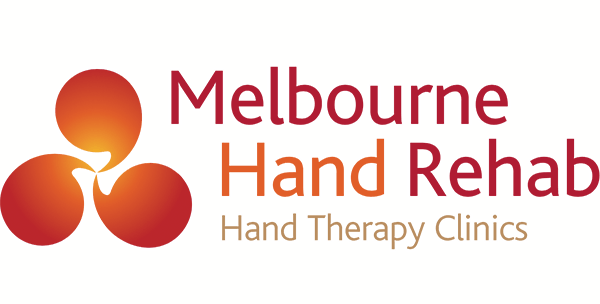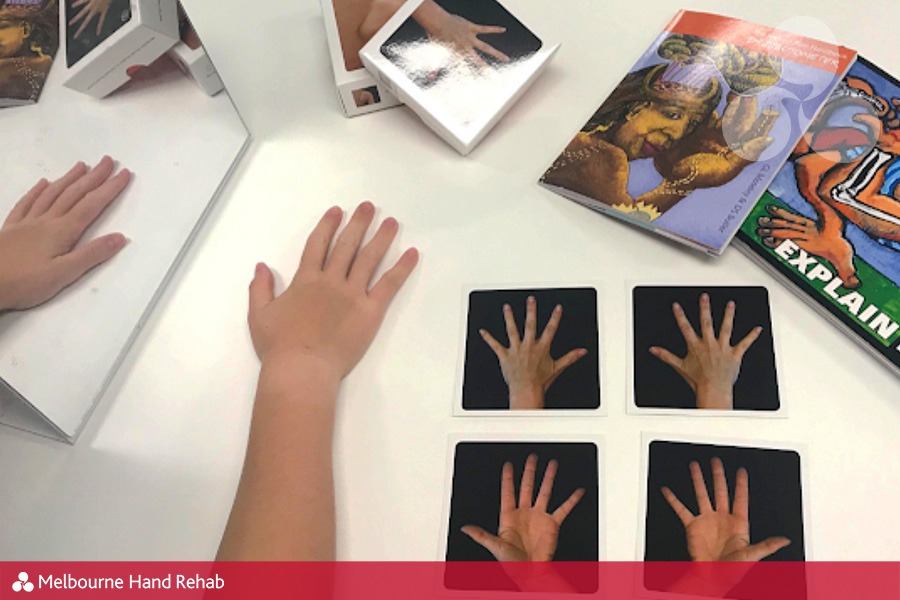
30 Oct What is mirror box therapy?
Living with chronic pain or recovering from a serious injury can be an overwhelming and challenging experience. Mirror Therapy or Mirror Box Therapy is one of the tools that hand therapists use to help increase movement and decrease pain in limbs.
Mirror box therapy has the potential to alleviate pain, improve mobility, and enhance the overall quality of life for individuals with various conditions. It is suitable to treat conditions such as:
- Complex regional pain syndrome (CRPS)
- Phantom limb pain
- Stroke recovery
- Burns
- Osteoarthritis
- Injuries requiring surgery for tendon and nerve repairs
- Soft tissue injuries such as complex crush injuries or fingertip amputations
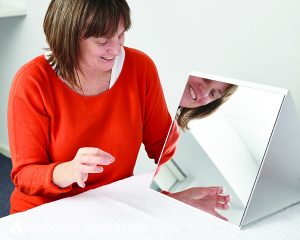
A Melbourne Hand Rehab patient using mirror therapy
Understanding Mirror Box Therapy
Mirror box therapy is a non-invasive therapy that utilises the concept of visual illusions to help rewire the brain’s perception of pain and movement. It was initially developed to treat phantom limb pain, a debilitating condition where individuals experience severe pain in a limb that no longer exists. The therapy was introduced by neurologist Vilayanur S. Ramachandran, and later refined by numerous researchers.
How it works
The therapy involves the use of a simple setup: a box with two compartments divided by a mirror. The affected limb, often the one experiencing pain or limited mobility, is hidden inside one compartment, while the healthy limb is placed in front of the mirror. As the individual looks into the mirror, they perceive a reflection of their healthy limb where the affected limb would typically be.
The brain, upon receiving this visual feedback, is tricked into perceiving the reflection as the missing or impaired limb. By engaging in specific movements with the healthy limb while watching the mirror reflection, the brain begins to rewire its neural pathways, reducing pain and improving motor function.
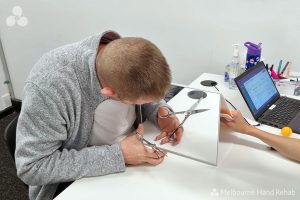
Applications and benefits
Mirror box therapy has shown promising results in treating a range of conditions, including phantom limb pain, complex regional pain syndrome (CRPS), stroke rehabilitation, and other chronic pain conditions. Studies have reported significant reductions in pain intensity, increased range of motion, improved motor control, and enhanced overall functional ability.
The therapy’s effectiveness lies in its ability to tap into the brain’s plasticity, the ability to reorganise neural connections in response to sensory input. By providing visual feedback that contradicts the brain’s perceived pain signals, mirror box therapy helps to reshape the brain’s neural pathways, leading to pain relief and improved motor function.
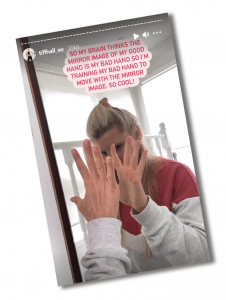
Hand therapy is a key part of your recovery following hand surgery.
Beyond physical rehabilitation
Mirror box therapy not only targets physical symptoms but also has a profound impact on the psychological well-being of individuals. Chronic pain can often lead to frustration, anxiety, and depression, affecting one’s overall quality of life. By providing a tool for pain management and functional improvement, mirror box therapy empowers individuals, restores hope, and contributes to a positive mindset during the recovery process.
Mirror box therapy has emerged as a remarkable therapeutic approach that harnesses the brain’s natural abilities to alleviate pain and improve function. With its non-invasive nature, simplicity, and significant potential, it offers a glimmer of hope for those living with chronic pain, impaired mobility, or undergoing rehabilitation.
If you are experiencing finger, hand or wrist pain, don’t hesitate to get in touch. We’d love to help you.
BOOK AN APPOINTMENT
For more information, call us directly on 03 9458 5166
